Chapter 2, Part 10
In the highlands of western Sumatra live a society with a unique culture where house roof is anything but unimaginative and women own the family’s wealth. In spite of being Muslims, their life is very much dictated both by the Quran and the matrilineal custom. Their dishes are always cooked in a generous amount and variety of spices – introduced by ancient traders who brought them from faraway spice islands – and are now easily found in all corners of modern-day Indonesia.
Minangkabau, an ethnic identity often associated with Minang or Padang restaurant all over the country as well as abroad, emerged in the 14th century when a Javanese prince by the name of Adityawarman went to Sumatra and established a new dynasty. A follower of Tantric Buddhism, the new king of Pagaruyung, named after the capital of the kingdom, ruled for almost three decades before it fell into obscurity for more than a century.
In a 16th century book on places he visited in South and Southeast Asia, a Portuguese apothecary by the name of Tomé Pires also chronicled contemporary travelers’ accounts of the land of Pagaruyung. Almost two centuries after Adityawarman’s reign, Pagaruyung was ruled by three kings – King of the World, King of Custom and King of Religion – by the time of Pires’ writings. Curiously, only one of the three kings was Muslim. It is apparent that from northern Sumatra Islam reached the coastal cities of Java much earlier than it did the western Sumatran highlands.
In the centuries that followed the Minangkabau (or Minang for short) people gradually converted to Islam. Today, similar with the people of Aceh, the Minang people are often regarded as a rather conservative Muslim society. However they retain some aspects of their matrilineal culture. The house, for instance, is owned by women while men only help constructing it. Traditionally, a boy lives in the house until he reaches puberty and returns to the house only after he gets married – to his wife’s house that is. And talking about Minangkabau house, it is by no means ordinary.
Rumah gadang, ‘big house’, is the traditional house of the Minang people. Aptly named for having multiple rooms, the ‘ownership’ of the rooms changes from time to time depending on how many daughters one family has. In a family of three daughters, for example, the eldest will get the master bedroom once she’s married. But when the second daughter is married, her elder sister and her husband have to move to bedroom number two. Eventually it is the last daughter and her husband who will get the master bedroom.
A son’s relationship with his father is no less complicated. Customarily, a son is taken care by his uncle, not his own father as he has to take care of his nephew. As the boy grows up and leaves the house, he will spend most of his night time at the village mosque learning the Quran. When he becomes an adult, he will travel far from home to look for opportunities (a tradition called merantau). Typically he will start a restaurant or photocopy business, or join other Minang people who have been running their businesses for years. Nevertheless, some Minang men forayed into unusual paths including the politics. One of Indonesia’s founding fathers was in fact a Minang.
Most of the time, the complicated family affairs happen either in the rice paddies surrounded by verdant hills, or under the multi-layered roofs of old Minang mosques, or beneath the pointy curves of rumah gadang roofs which are inspired by water buffalo’s horns. In fact, the word kabau in Minangkabau means water buffalo in local language. The grandest of all rumah gadang is none other than the former royal seat of Pagaruyung kingdom, the Pagaruyung Palace. Built in the 17th century, the palace was used until the 19th century when it was burned down in a war. Its current form, considerably smaller than the original structure, is the third reconstruction of the palace following a lightning strike in 2007 which burned down the entire structure as well as precious artifacts of the kingdom.
Present-day travelers from Germany and Belgium who visit West Sumatra during festive seasons might feel very welcomed for they will find the colors of German and Belgian flags – black, red and yellow – everywhere. But it is in fact the Marawa flag, symbolizing three important aspects in Minangkabau society: law, religion and knowledge. However law, religion and knowledge are apparently not only important for the Minang people. They were part of the reasons for the large number of Europeans leaving for Asia and beyond in the 15th century, an event that would forever change the fate of people living thousands of kilometers away from the Old Continent. One event in history marked the beginning of this new era.
~ End of Chapter 2 ~
Click here for the full list of stories from the Spice Odyssey series.


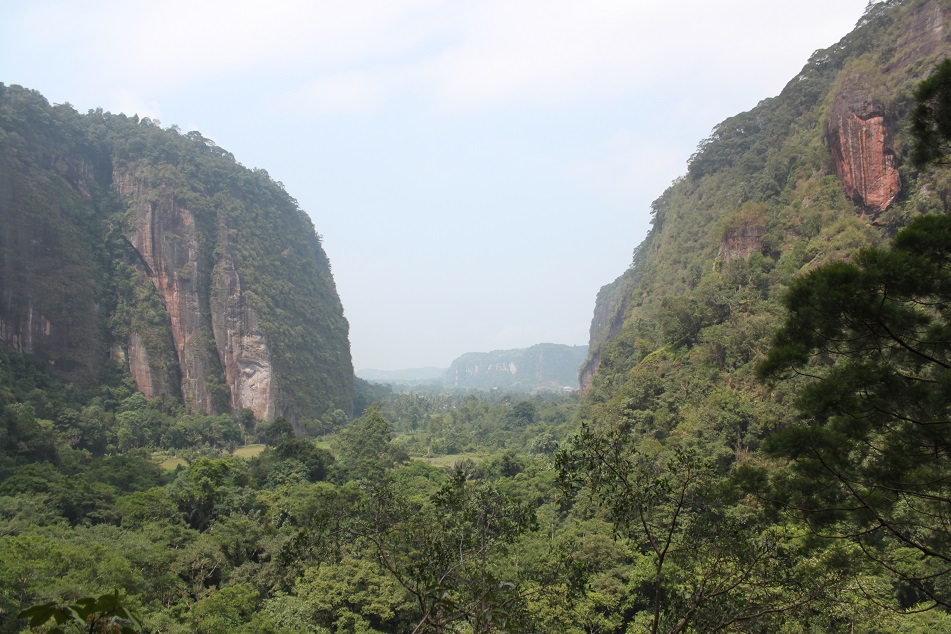

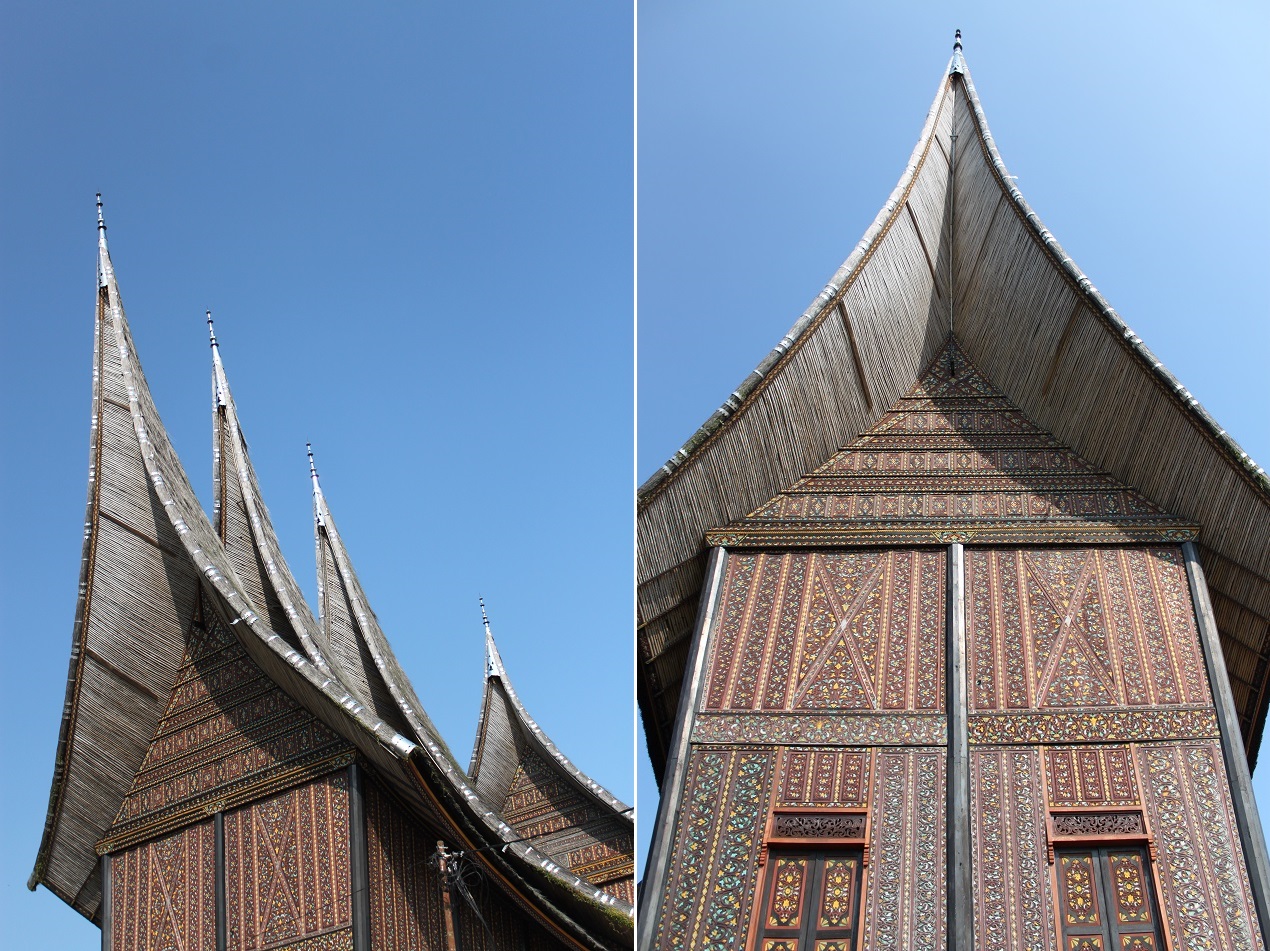

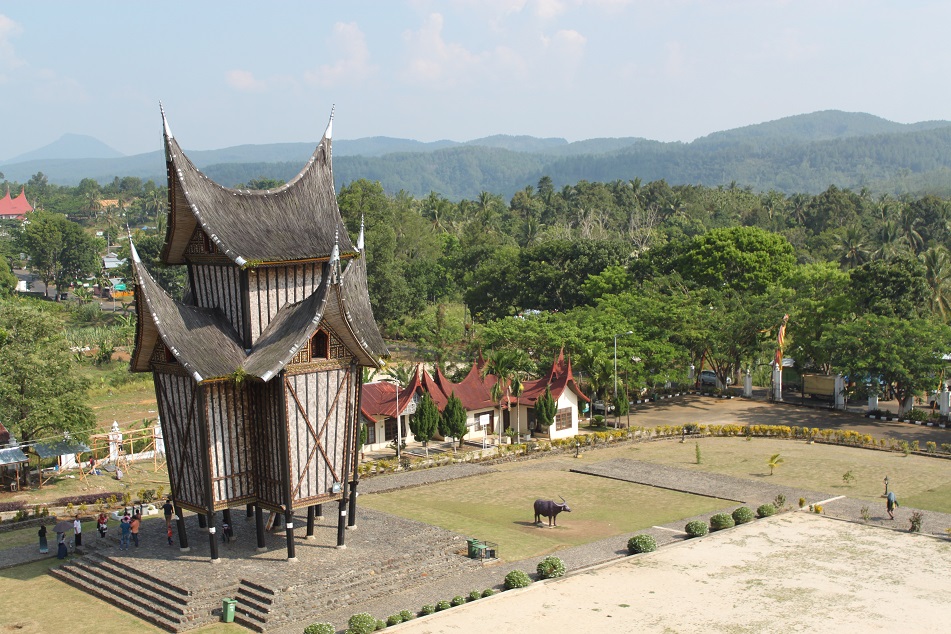
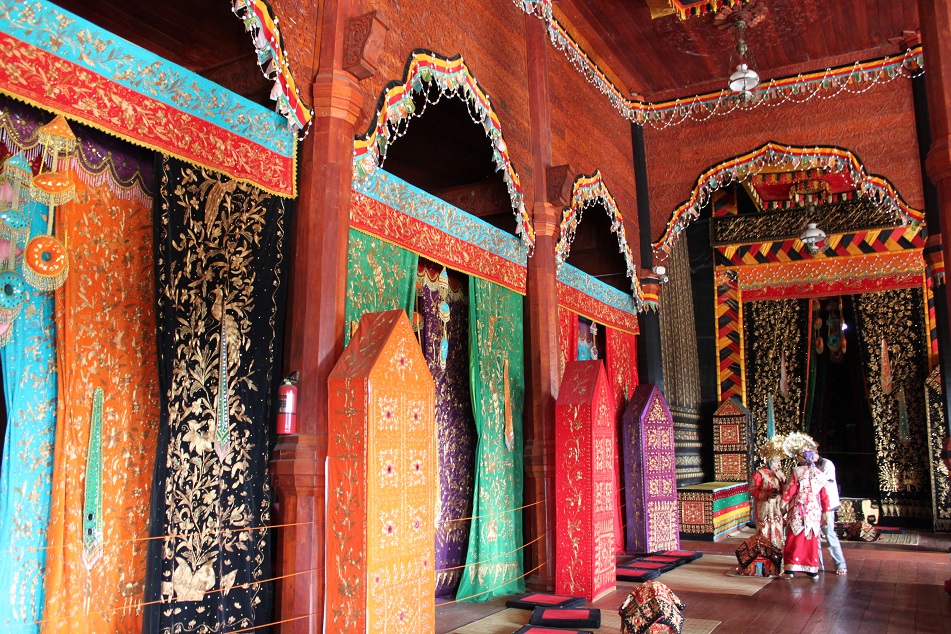
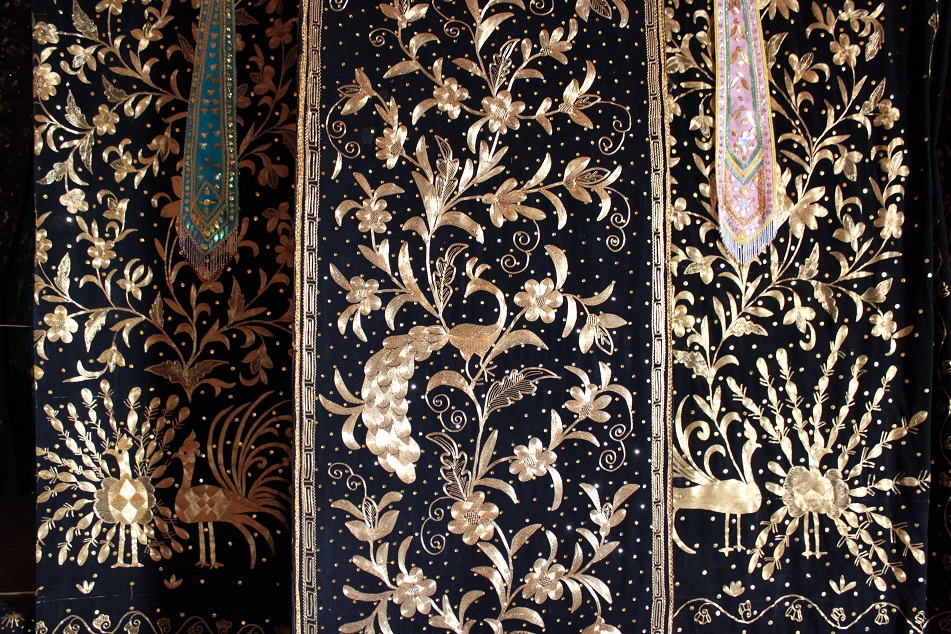
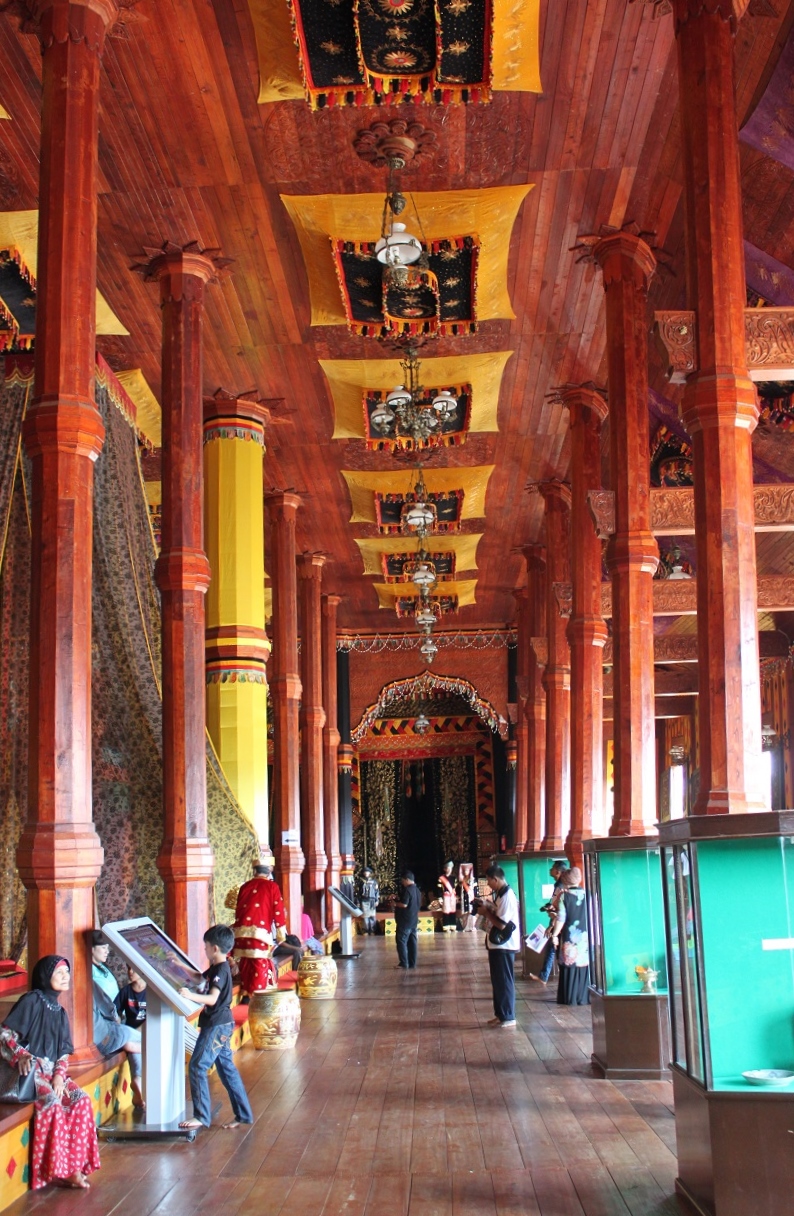
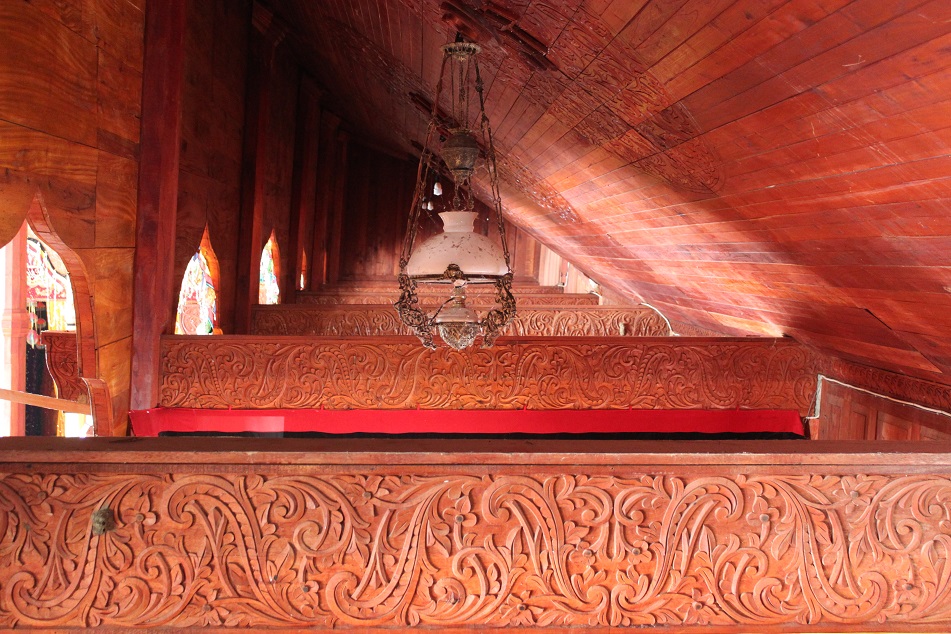

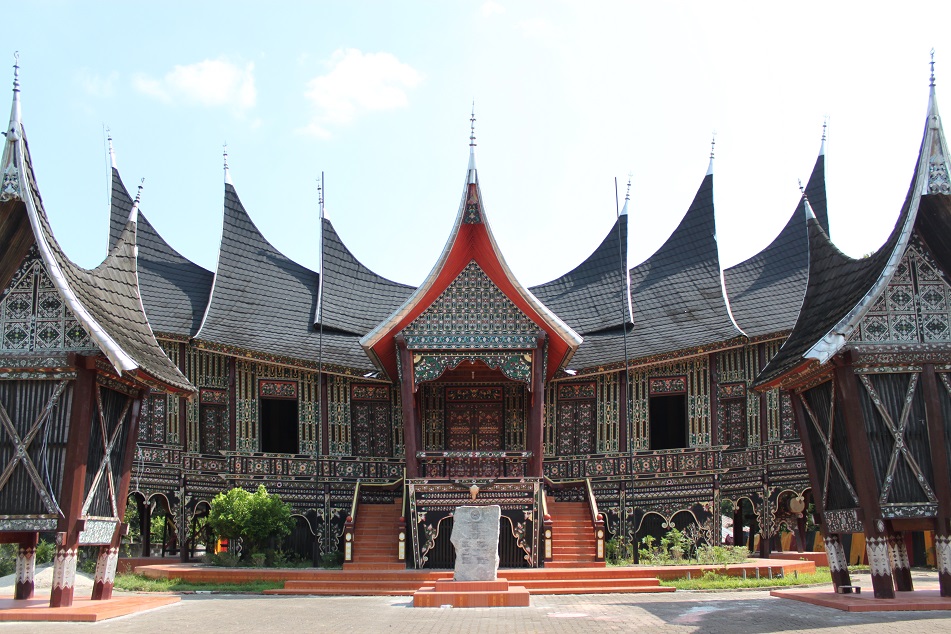
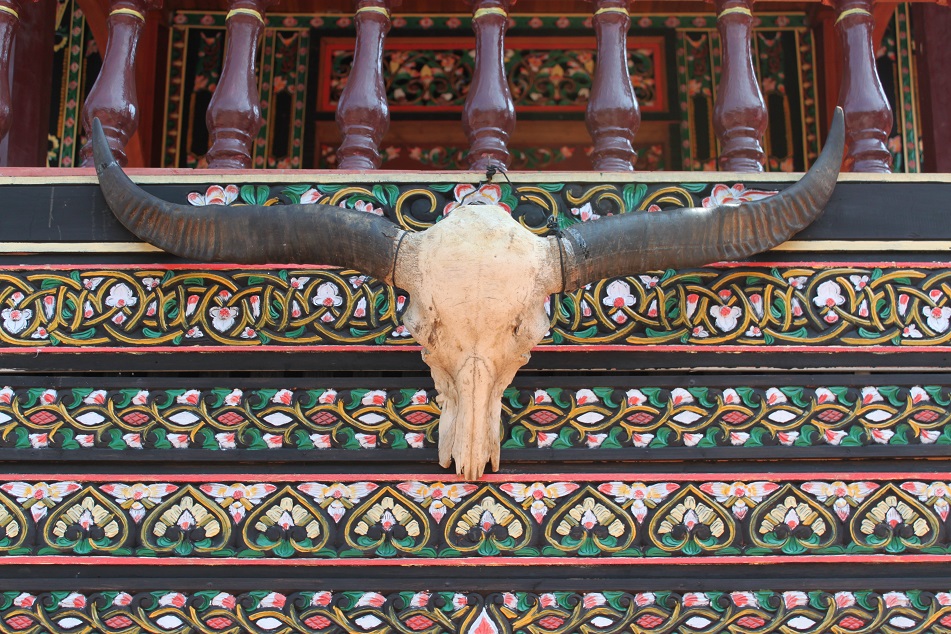
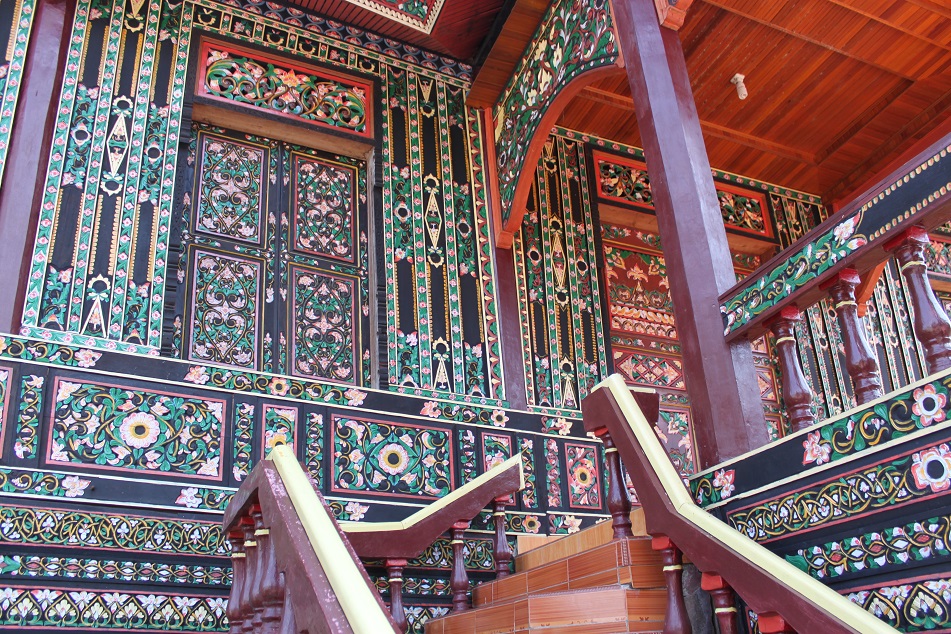


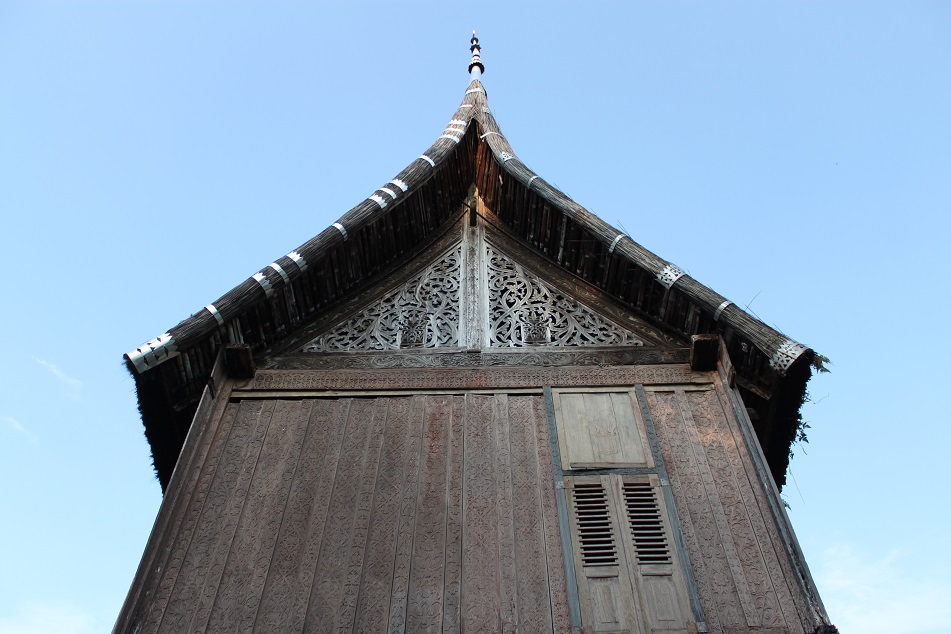
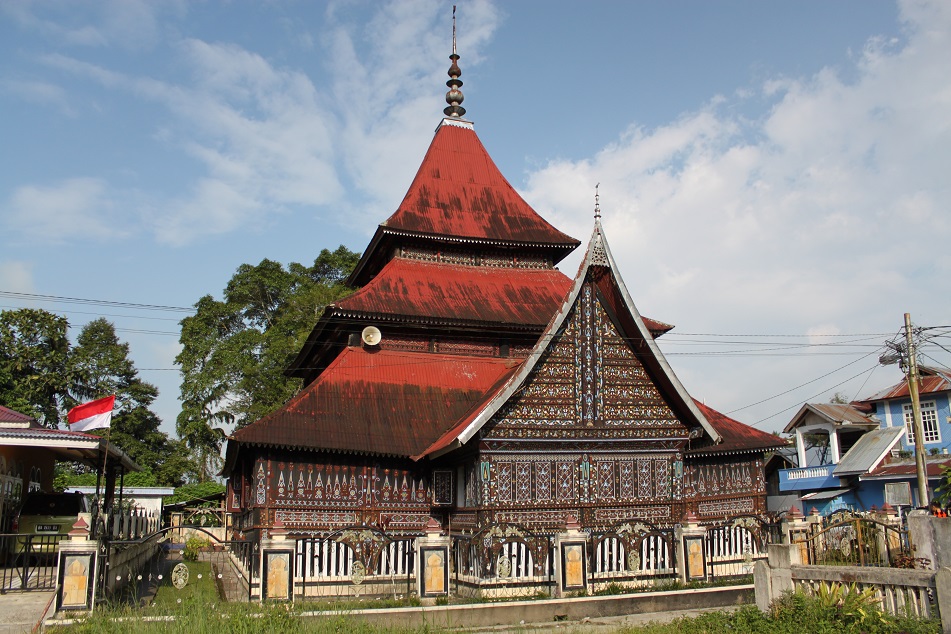
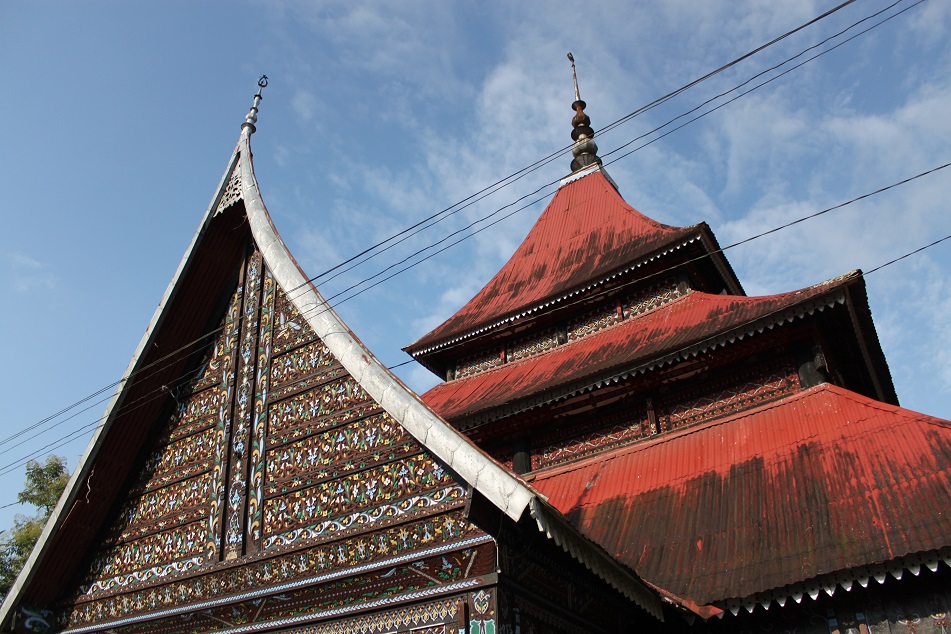
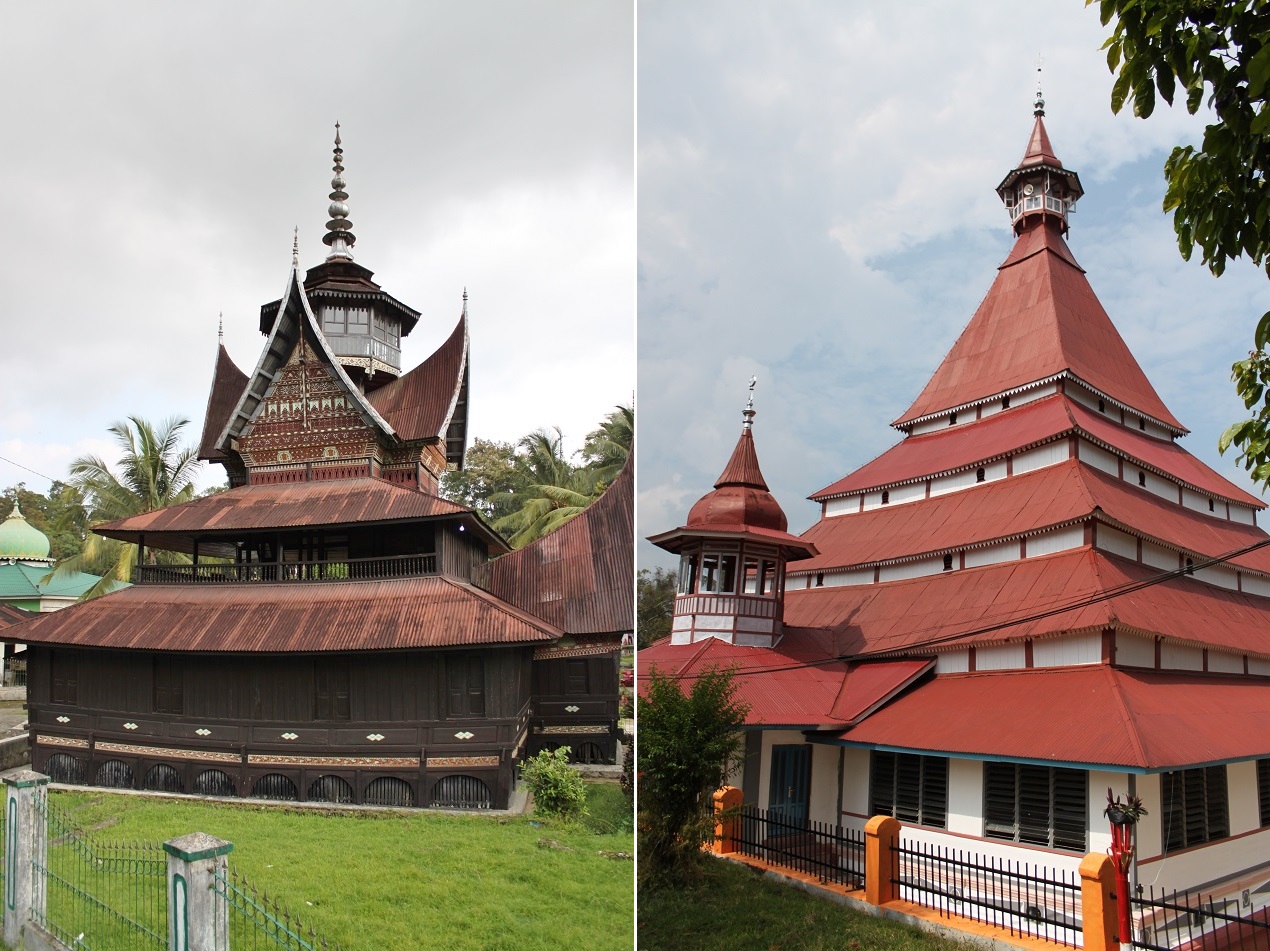
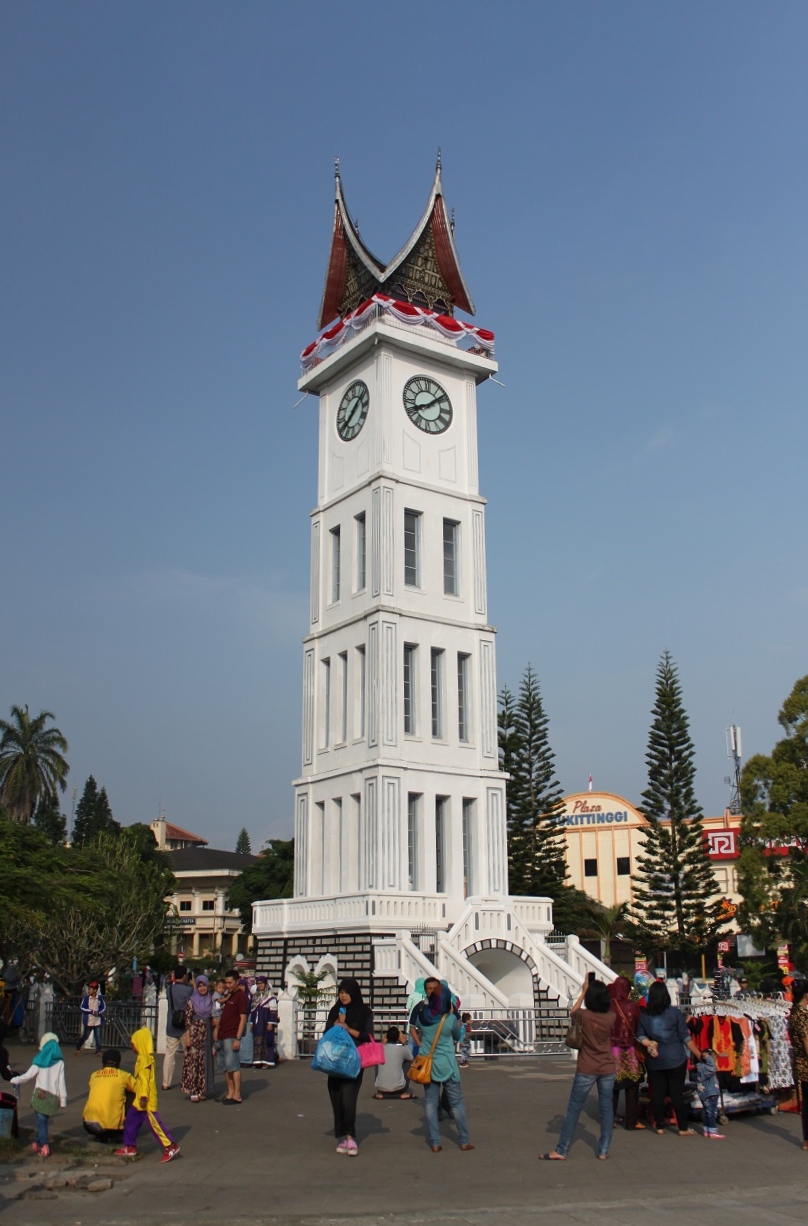
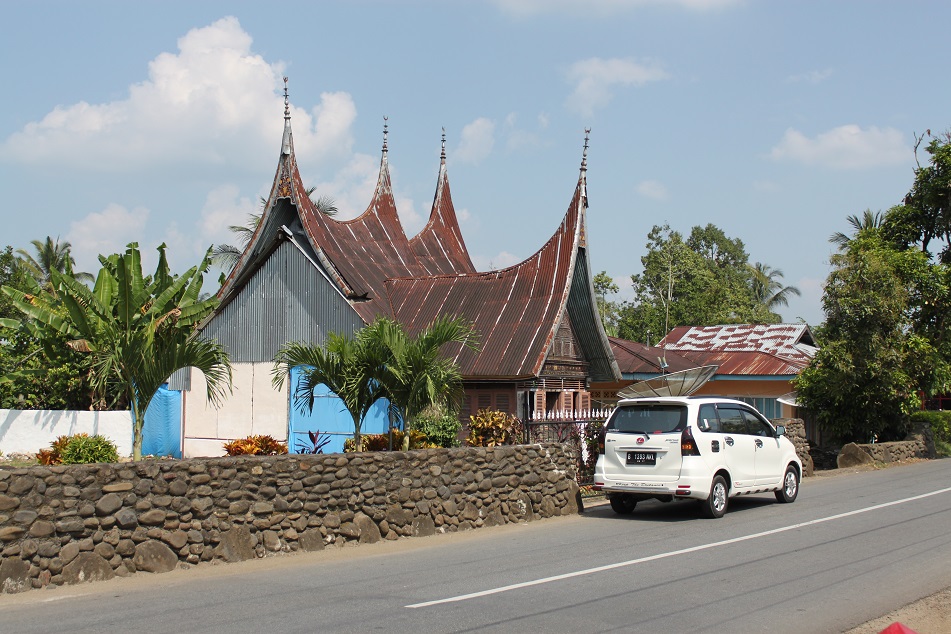
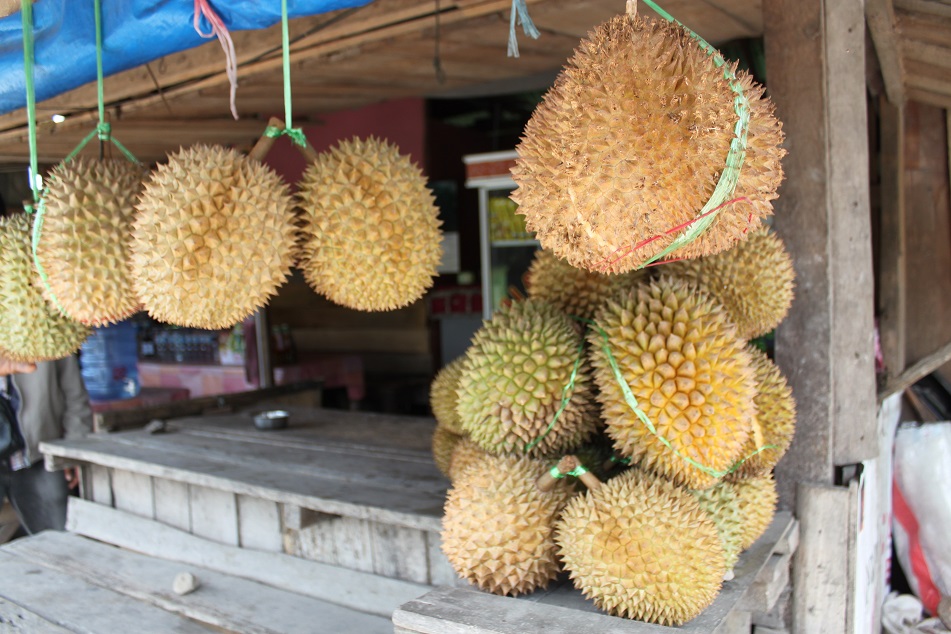

That beautiful architecture, i hope i will take the place next years
Thanks for you story
LikeLike
And when you do visit West Sumatra, I think it’s better to avoid September – November as historically that’s when the forest fires happen every year.
Thank you for reading.
LikeLiked by 1 person
Customarily, a son is taken care by his uncle, not his own father as he has to take care of his nephew. <— dalam peribahasa kami orang Minang, istilahnya adalah: "anak dipangku, kemenakan dibimbing."
Dan bukan cuma anak lelaki, melainkan juga anak perempuan. Dalam hal ini ninik mamak (saudara laki-laki ibu, atau paman dari garis ibu) memiliki peran yang amat besar dalam kehidupan sehari-hari. Seorang gadis yang akan menikah itu harus dimintai persetujuan dari paman mereka, bukan dari ayahnya. Meskipun nantinya dalam hal menikahkan, tetap sang ayah yang berperan sebagai walinya (jika masih ada).
Menyoal tentang harta juga seperti itu, meskipun memang harta dikuasai atau menjadi milik wanita, namun segala hal pengurusannya dilakukan oleh saudara laki-laki. Jadi wanita memiliki hak milik, laki-laki memiliki hak guna pakai dan hak rawat. Hal ini dimaksudkan, untuk melindungi wanita dari kesewenang-wenangan.
Secara pribadi, sebagai orang berdarah Minang (meskipun mungkin secara adat tak dihitung), aku kadang juga merasa ribet, Karena ada persilangan antara penggunaan hukum agama Islam dan hukum adat yang cukup kuat. Tapi memang sih, semuanya cukup jelas, karena sudah berlaku bertahun-tahun.
O iya, menyoal tentang Istano Basa Pagaruyung, meskipun memang ukurannya cukup besar, tapi aku merasa untuk ukuran istana sebuah kerajaan, dia tak terlalu besar. Sepertinya itu lebih ke Istana administrative aja ya, untuk tempat tinggal mungkin dulunya ada lagi beberap buah lainnya. Dan hal paling unik yang aku suka adalah bagian kaki-kakinya yang tidak ditancapkan ke dalam tanah, melainkan cukup ditaruh di atas batu saja untuk melindungi istana dari impak gempa yang besar.
Nice article Bam, foto-fotonya juga bagus. Mengingatkan aku untuk pulang ke Sumbar dan mengeksplornya lebih lama lagi. Kurang puas euy waktu terakhir kali pulang ke sana. Maklum, ngawal ortu 😀
LikeLiked by 2 people
“… kemenakan belimbing” –> salah baca efek masih laper pagi-pagi. 🙂
Dari penjelasan yang aku dapetin pas lagi di sana ditambah sama penjelasanmu ini memang bener ya adat Minang itu rumit banget. Jadi inget pepatah “It takes the whole village to raise a child”, dan dalam konteks orang Minang ini bener banget. Aku aja suka merasa adat Jawa itu rumit, apalagi kalo aku jadi orang Minang ya. 🙂
Tentang Istano Basa Pagaruyung, dari satu sumber yang aku pernah baca istana yang sekarang itu hanya sepertiga dari ukuran istana aslinya karena untuk membangun lagi sesuai ukuran aslinya akan sangat mahal. Sayangnya pas aku mau nulis postingan ini aku gak nemu sumber yang dulu aku baca itu. Btw kalau diperhatikan banyak bangunan tradisional di Indonesia yang dibuat dari kayu dan tidak ditancap di tanah, mungkin karena pengalaman nenek moyang dulu mengenai gempa kemudian jadi ilmu yang turun temurun.
Sok atuh Bart pulang ke Sumbar. Duren yang aku cobain itu kayaknya salah satu duren paling enak yang aku pernah makan deh. Manis banget, dagingnya tebel dan lembut… tuh kan ngomongin makanan lagi.
LikeLiked by 1 person
Rumit Bam, ditambah orang Minang kalau misalnya berdiskusi secara formal selalu menggunakan pantun dan kiasan. Jadi kadang untuk menangkap makna dari sesuatu maksud, kita ya harus agak mikir dulu hahahaha. Jadi kalau si A mau ngelamar gadis B, maka dia harus siapkan dulu kata-katanya, atau cari orang yang bisa dijadikan juru bicara. Biar gak salah ucap.
Hehehe kebayang deh Bam mahalnya seberapa, seandainya Istano Basa Pagaruyung nya dibangun sesuai ukuran aslinya. Soalnya, kami di Bukittinggi juga punya sebuah rumah gadang yang harus diperbaiki. Itu sudah bertahun-tahun diskusi, belum jalan-jalan perbaikannya. Karena biayanya yang lumayan besar dan rumitnya diskusi soal kepanitiaannya. Padahal rumah gadang kami gak sampai sepertiga dari istana raja yang di Batusangkar itu. Padahal aku dah ngarep itu rumah bisa segera beres, aku pengen nyobain nginep di rumahgadang soalnya 😀
Duh, Bama mah salah dong kalau nawarin duren ke aku. Gak doyaaaaannn ,,, mau kata enak juga. Gak tahan Bam. Aku mendingan disuruh makan gulai jariang deh. Iko lamak banaaaaa 😀
LikeLike
Alamak… Harusnya orang Minang jago diplomasi dong ya, soalnya udah biasa berkomunikasi pake cara yang rumit. 😀
Soal rumah gadang, kebayang sih berapa biaya yang dibutuhkan buat ngebangun/renovasi. Pas aku di Toraja dikasih tau kalo buat bikin satu rumah Tongkonan butuh ratusan juta. Nah rumah gadang kan juga butuh kayu banyak, dan kalo yang bener-bener tradisional kan pake atap ijuk. Bisa buat traveling bertahun-tahun tuh duitnya, hehe.
Oh aku lupa kamu gak suka duren. Bart, give it a try lagi lah. Lembut, legit, manis, creamy… hmmm yum! 😀
LikeLiked by 1 person
Kalau melihat sejarah bangsa Indonesia di masa awal kemerdekaan, khan banyak ahli diplomasi yang berasal dari Minang. Salah satunya Haji Agus Salim. Mungkin, sesuai analisismu, itu skill beliau datang dari latar belakang budayanya ya.
Bisa miliaran juga kali ya, secara kayunya mahal. Ditambah kalau harus dikasih aksen detail yang rumit.
Hahahahaha wani piro Bam? 😀
LikeLike
Iya, sudah terlatih sejak dini, hehe. Mungkin itu juga sebab orang Minang banyak yang sukses berbisnis, karena lihai dalam bernegosiasi.
Wah, iya bener, belum termasuk ukirannya. Bisa butuh bertahun-tahun bahkan lebih dari satu generasi buat bikin satu rumah gadang tuh.
Wani njamin kalo kamu pasti suka. 😀
LikeLiked by 1 person
Waaaaaah mas Bama, walaupun cuma seperempat bagian diriku Minang, senang banget ngebacainnya. Bisa jadi saya durhaka banget ya punya darah Minang tapi baru dua kali seumur hidup menjejak disana. Tapi benar sekali it’s so complicated hahahaha dengan hubungan kekerabatannya apalagi saya yang cuma kecipratan seperempatnya….
Btw durennya ga nahanin…. *pingsankepengen
LikeLike
Wah ternyata Mbak Riyanti seperempat Minang. Saya seperempat Jawa mbak. Gak durhaka lah mbak, cukup Malin Kundang aja yang dikutuk jadi batu. 🙂 Setelah dikasih tau mengenai seluk beluk adat Minang saya cuma bisa melongo, terpana karena rumit banget. Mbak, itu durennya beneran enak lho. Manis, lembut, murah pula. 😀
LikeLiked by 1 person
Oh my goodness, those rooflines – they are almost out of Dr Seuss, or if you don’t know him, out of a fantasy painting! I think they are stunning – a little weird, but absolutely captivating. The whole post is a delight, Bama, with the detailed wood carvings, the landscapes, the durians, and the description of a unique society!
LikeLike
Those houses make a perfect setting for any Dr Seuss stories or Tim Burton’s movies. They look whimsical at the same time pretty, don’t they? There are more places in West Sumatra to explore, but James and I only had a few days, so we focused on the province’s cultural heartland. Thanks for your comment, Lex!
LikeLiked by 1 person
hasil fotonya keren-keren semuaaaa…^^
model Grand Mosque nya sangat elegan, semoga suatu saat bisa berkunjung ke sana
LikeLiked by 1 person
Terima kasih ya, Baiq. Mudah-mudahan keinginannya untuk mengunjungi Sumatra Barat bisa terwujud segera. Sayang pas saya ke sana Masjid Raya Sumatra Barat masih belum selesai pembangunannya, jadi gak bisa melihat dalamnya seperti apa. Tapi kalau tidak salah pas Idul Fitri kemarin presiden kita sholat Id di sana. Jadi mungkin sudah selesai pembangunannya/dalam tahap penyelesaian.
LikeLike
amiiin… jadi penasaran, dalemnya pasti kece abiss (y)
LikeLiked by 1 person
The house kind of remind me of the Stave churches of Norway met the far east. Thank you for introducing me to another place.
LikeLike
Oh yes, I’ve seen images of those churches before. Very impressive indeed! You’re welcome, and thank you for reading.
LikeLike
What a unique group of people, and I love their roofs, and the beautiful decoration of the palaces.
Alison
LikeLiked by 1 person
The roofs are amazing, aren’t they? And despite the convoluted aspects of the culture, it’s very fascinating for me — as an outsider — to learn about it.
LikeLiked by 1 person
Hey Bama, I love love love these pictures! All of them! It amazes me everytime anew that you can pull off nature shots as well as buildungs’ AND people’s pictures. Just wow! My favourite pictures are the colourful ones: the one of the colourful fabrics in the palace and the one of the floral motifs at Istano Silinduang Bulan! Amazing.
LikeLiked by 1 person
Hi Katha. Vielen dank! You’re too kind. 🙂 But with such unique architecture and nice weather it was impossible for anyone to take bad photos of those houses. Can you imagine how opulent the main palace must have looked like before the lightning strike in 2007.
LikeLike
I have to admit that I didn’t find the time to read your article (as is always the case, unfortunately) and just looked at your pictures. So there was a lightning strike and this is what the palace looks like after it? WOW. No, I can not imagine the magnificence of that. Must have been really stunning!
LikeLike
No worries. The palace was destroyed three times, but because it has a very important symbolism to the Minang people it’s always rebuilt. I really hope it is in a better state of preservation now.
LikeLike
Your research is really impressive!
LikeLiked by 1 person
Bama, this is a lovely roundup of our time in West Sumatra – and a useful primer for readers who are unfamiliar with Minang customs. The biggest highlight for me was undoubtedly Istano Basa Pagaruyung, even if it was a recent replica! I would love to see how they get the pointy, curving roofs just right. And the Grand Mosque in Padang is such a clever take on traditional Minang architecture.
LikeLiked by 1 person
Makasih James. Istano Basa Pagaruyung was the place I wanted to see the most in West Sumatra. It’s quite impressive with its current size, let alone if it was rebuilt to its original dimensions. Too bad the Grand Mosque was not completed yet when we went so we couldn’t see the interior. What I like about the mosque is that it shows that you don’t need to always add domes to a mosque to make it look grand. You have to have faith in your traditional architecture.
LikeLiked by 1 person
Incredible post, with stunning images, and a story very well told 🙂
The landscape, architecture and everything about this place looks simply stunning…
Thank you so much for sharing and have a beautiful day ahead 🙂
LikeLiked by 1 person
Thank you, Sreejith. West Sumatra’s architecture is really stunning. It amazes me how some people who lived centuries ago came up with the idea of creating house roofs which looked like buffalo horns. Thanks for reading and have a nice day too! 🙂
LikeLiked by 1 person
Hope I get to visit your beautiful country and explore it’s diversity soon 🙂
You are a true ambassador of your country, Bama 🙂
LikeLike
And hopefully I get to visit India for the second time. Blogging is one of the best ways for soft diplomacy, isn’t it? When you do come to Indonesia don’t hesitate to drop me a message!
LikeLiked by 1 person
You are absolutely right 🙂
There is nothing like soft diplomacy…
We don’t have any political agendas, just enjoy, appreciate and share the beauty of the world around us 🙂
I will surely be in touch during my planning phase for information …
Thank you so much for your kind words, Bama 🙂
LikeLiked by 1 person
What a revelation to go from seeing those curious sail-like rooftops to learning about this most unusual societal mixture! Your post shows me again how travel can keep surprising those of us who have been doing it for awhile.
LikeLiked by 1 person
Hi Atreyee and Jesse. The world is such a big place to explore and even today it still has its own way to surprise and amaze us. And we, bloggers, always inspire each other to travel more and travel further.
LikeLiked by 1 person
The majestic roof lines is a sight out of a fairy tale ~ to imagine the creative, innovative architecture at the time to build such magnificent houses/palaces is as impressive as your photos of the detail. What is most surprising, however, is the power of the women in the Minangkabau society – a Muslim society to boot. The wonders of travel and the lessons it can teach the world. Great post Bama.
LikeLiked by 1 person
Either the Minang people were inspired by a fairy tale, or they inspired a fairy tale, it’s hard to tell. It’s interesting to see how nature, animals and the universe have provided societies across the globe with endless inspirations for their architectural styles and cultures. As for the power of women in the Muslim community, I wrote in a separate post about how in Aceh — the only province in Indonesia where sharia law is applied — they had sultanas (female sultans) and a female admiral in the past: https://harindabama.com/2016/07/17/banda-aceh-over-the-centuries/
Thanks for reading and sharing your thoughts, Randall.
LikeLike
great article, mate… i’ve been living in Padang since Feb 2016 and i just realize that Ranah Minang has such incredible nature and culture.. those are, in your article, just a few part of Minang beauty, the most populer one.. Come again and i’ll show you more of Minang beauty.. You can see some in my new blog –> http://barrabaa.blogspot.co.id/ .. i’ve visited many places in here but sadly just a few that i’ve already written in my blog,, i’ll add the rest soon 😀
LikeLike
Thanks Bara. Ranah Minang probably has the most beautiful landscape in Sumatra, unfortunately the locals don’t really appreciate it. During my visit I saw endless piles of garbage littering many of the otherwise picturesque spots in the province. The next time I come I would love to explore places outside the cultural heartland.
LikeLike
A great post, Bama; I always learn an enormous amount about the world from reading your posts. The architecture here is fascinating.
LikeLiked by 1 person
Thank you, Angeline. The Minang architecture was the very reason why I wanted to visit West Sumatra so much. No one does rooflines quite as intriguing as those.
LikeLike
In reading the comments Bama yes I think the roof structures are perfect for Tim Burton. I could look at those all day long. Fabulous photos and I especially like the one from above looking down on the building. Gives a special perspective.
LikeLike
I won’t be surprised if he’s inspired to make a movie after visiting those palaces and houses, if one day he does come. Thanks Sue! Oh btw, West Sumatra is quite well-known in the region for its annual Tour de Singkarak: https://en.wikipedia.org/wiki/Tour_de_Singkarak
Maybe you’d like to cycle around the lake if you visit this part of Indonesia someday.
LikeLiked by 2 people
Very interesting architecture and buildings. It was nice to read all about it, I’ve learnt a lot today!
LikeLike
Probably one of the most intriguing concepts of vernacular architecture in the region, I must say. Thanks for reading, and I’m glad you enjoyed this post.
LikeLiked by 2 people
Thank you for the detailed information and history, of these buildings and towns. The architecture, design and colors are amazing. Why was that palace continuously burned down? Im surprised they didnt just re-use it.
LikeLike
And thank you for reading. The palace was burned down three times. The first was during a local conflict back in the early 19th century, while the second and third were caused by the nature.
LikeLiked by 2 people
No problem. Thank you for clarifying that for me.
LikeLike
My pleasure!
LikeLiked by 1 person
The roof of Rumah gadang looks grand, very much imposing but less ornamental compared to Bangkok Palace
LikeLiked by 1 person
The roofs of Rumah Gadang truly make the house an imposing structure in and of itself. However the Grand Palace in Bangkok is on a completely different league.
LikeLiked by 1 person
I was recently in Sumatra and loved the Batik architecture! We were in the Lake Toba area where I was surprised to find so many people identifying as Christians, something very unusual within Indonesia! We are looking forward to exploring more of the island (probably the south) and your pictures and writing are very inspirational!
LikeLiked by 1 person
Hi Caitlin. I believe you’re referring to the Batak architecture, because batik is a dyeing technique used in Java for their traditional cloths. The people around Lake Toba (as well as those who live on Samosir — the island in the middle of the lake) are indeed predominantly Christian. However in general the further east you go in Indonesia, the more Christians you will encounter. The provinces of North Sulawesi, West Papua and Papua are predominantly Christian, while the majority of the people in East Nusa Tenggara are Catholics. In Maluku the composition of Muslim and Christian residents is roughly 50-50. There is also a considerable number of Christians in Java, Borneo, and the southern part of Sulawesi. Overall there are around 25 million Christians living in Indonesia.
Hope you’ll explore more of Indonesia and experience its diversity. Last year I traveled for three months across the country and I barely scratched the surface! Here’s the link: https://harindabama.com/2015/11/01/three-months-across-indonesia/
Thank you for reading and for leaving such a kind comment!
LikeLike
Pingback: George Town’s Light and Shadow | What an Amazing World!
Pingback: Batak: From Cannibalism to Christianity | What an Amazing World!
Pingback: Toraja: Where Life Revolves around Death | What an Amazing World!
Pingback: Influences from Bharat | What an Amazing World!
Pingback: Here Come the Europeans | What an Amazing World!
Bring me there.. Huu
LikeLike
Hi Khadijah. There is a direct flight from KL to Padang, so it should be quite easy for you to get there. 🙂
LikeLiked by 1 person
Tulisan yang sangat informatif, mas!
Btw lumbung padi yang ada di foto 7 dan 13 itu dalam Bahasa Minang disebut Rangkiang. Desainnya semacam versi mini dari rumah gadang, dan digunakan untuk menyimpan padi. Biasanya minimal ada 2 rangkiang di tiap rumah gadang (dari 4 jenis yang ada): satu untuk padi yang dikonsumsi sehari-hari, satunya untuk padi yang akan digunakan untuk berjual beli.
LikeLike
Terima kasih banyak atas informasinya mengenai Rangkiang, Mas. Dari berbagai tipe lumbung padi yang ada di Indonesia, Rangkiang inilah yang menjadi favorit saya. Bentuknya menjulang ramping dengan mahkota yang meruncing cantik.
LikeLiked by 1 person
Cukup “niat” ya desainnya untuk sekedar tempat penyimpanan padi. Hehe.
LikeLike
Bukti bahwa dengan adanya niat sesuatu yang unik pun bisa dihasilkan. 🙂
LikeLiked by 1 person